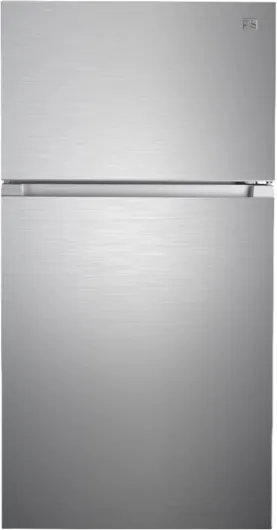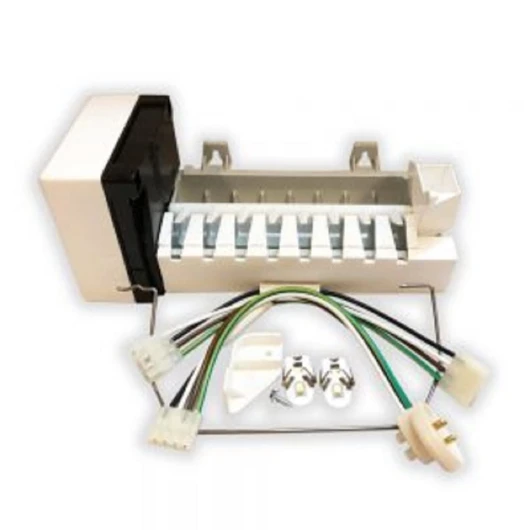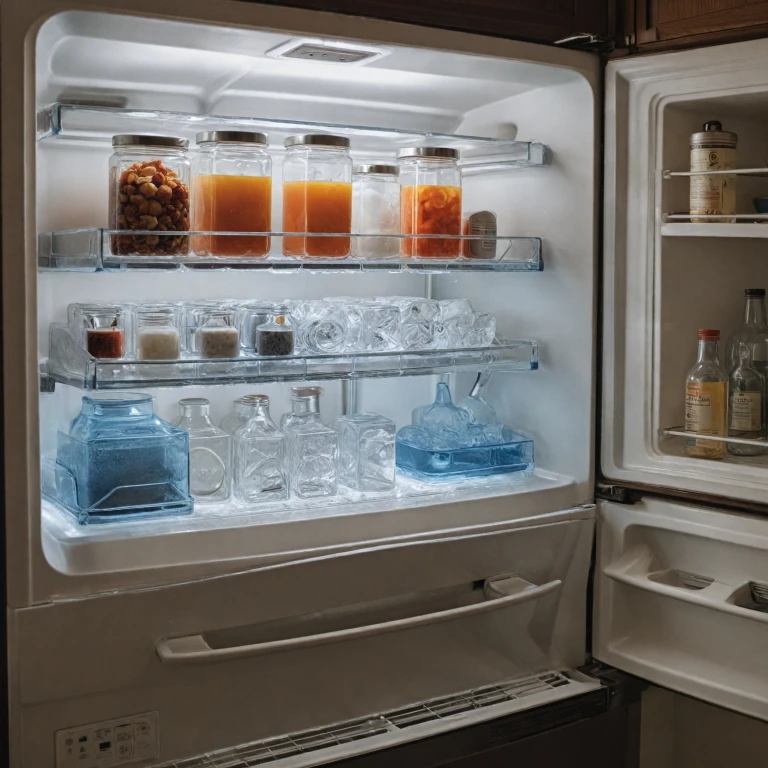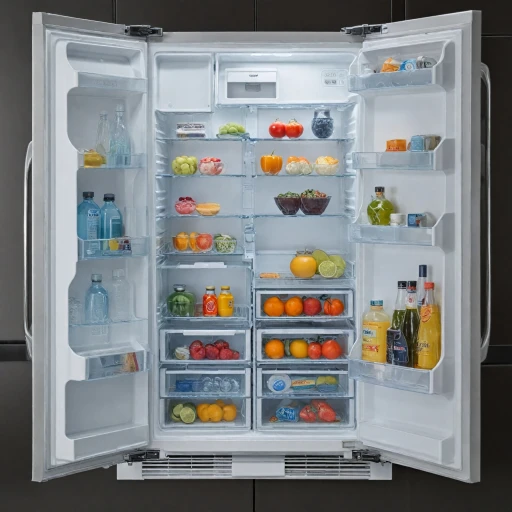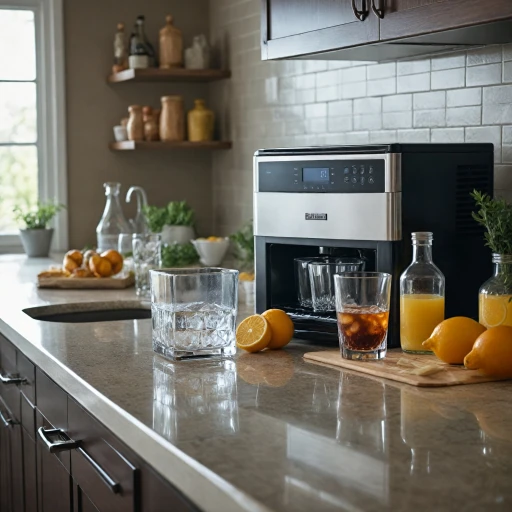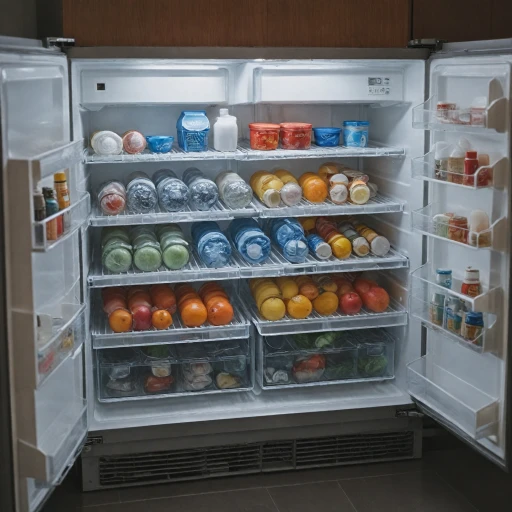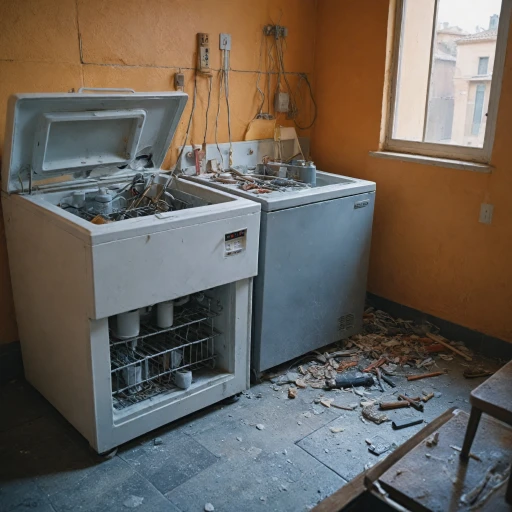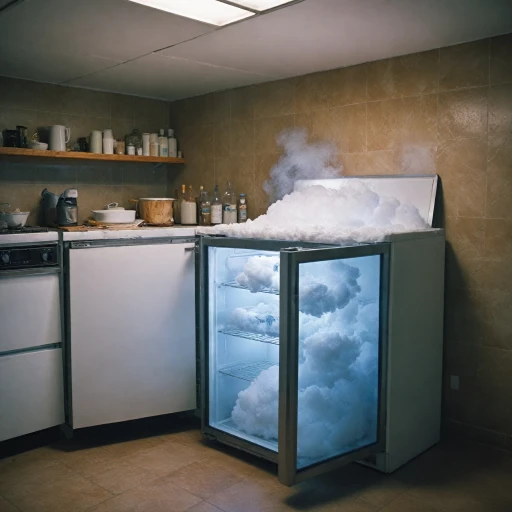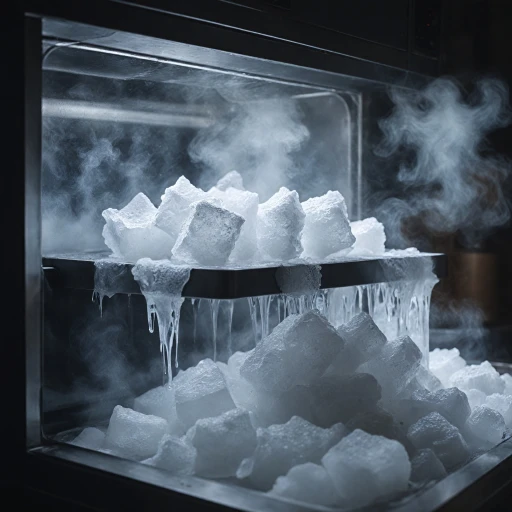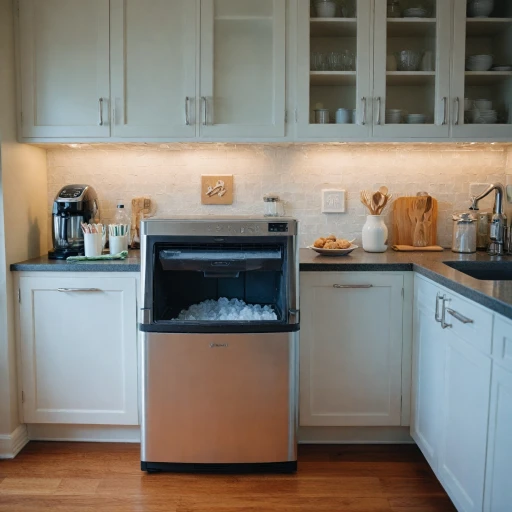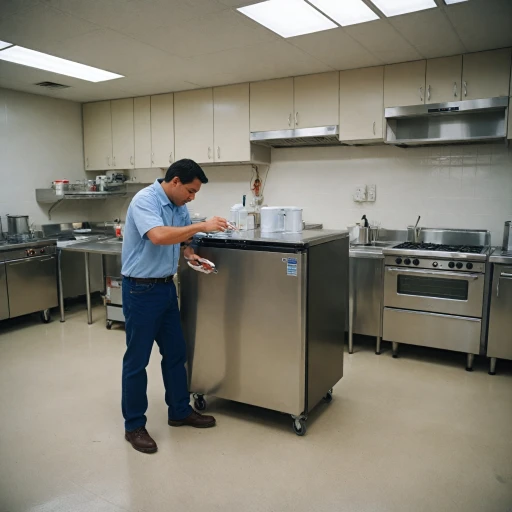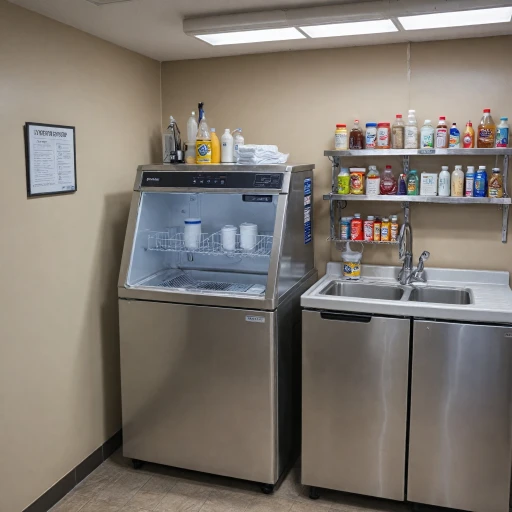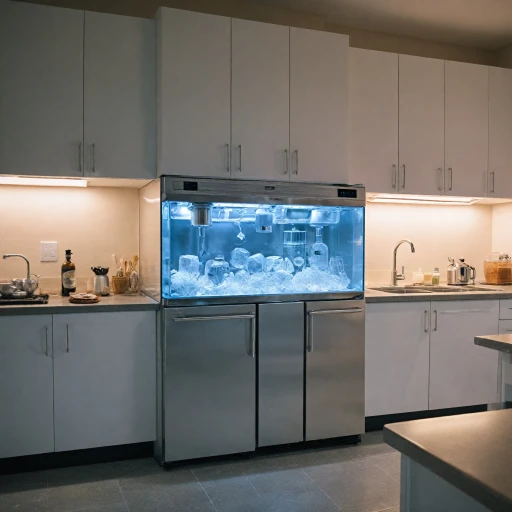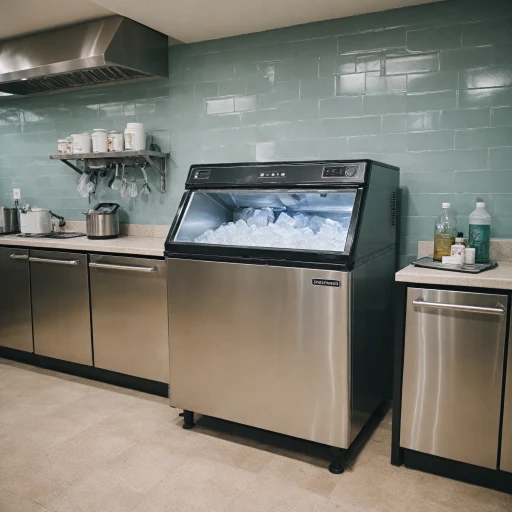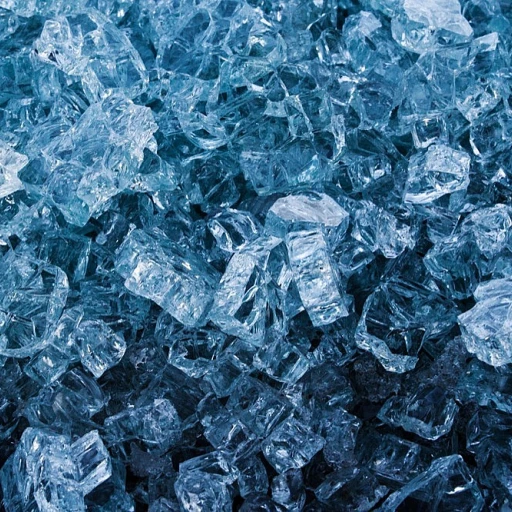
Understanding Common Kenmore Ice Maker Problems
Troubleshooting Common Ice Maker Malfunctions
Understanding why your Kenmore refrigerator ice maker might not be working is crucial for swift repair. For Kenmore models, typical predicaments often involve the ice maker not producing enough ice, or water not reaching the ice maker at all. Here are the most ubiquitous issues you might encounter:
- Water Inlet Valve Trouble: This valve controls the water supply to the ice maker. If it malfunctions, insufficient or no water might reach the ice maker.
- Door Switch: Some Kenmore refrigerator models incorporate a switch that prevents the ice maker from dispensing ice if the freezer door is open. A faulty switch can hinder operations, leading to ice maker issues.
- Water Filter Blockage: A clogged filter impedes water flow to the ice maker. It's imperative to regularly replace the water filter to prevent such blockages.
- Defective Thermostat: If the freezer's temperature is not maintaining its optimal level, the ice maker might not operate efficiently. Ensuring the thermostat is set appropriately is critical.
By diagnosing these components, you can often resolve these common Kenmore refrigerator issues effectively. Additionally, regular checks of the water dispensing system and ice bin can further enhance the appliance's repair efficacy. For more intricate complications affecting Kenmore Elite models, professional expertise may be necessary to ensure the ice maker is functioning properly and the freezer's performance is uncompromised.
Essential Tools for Ice Maker Repair
Gathering the Necessary Equipment
For anyone tackling a Kenmore refrigerator ice maker repair, having the right tools is crucial. While you might not need a whole toolbox, there are certain essential items that will facilitate the process.- Screwdriver Set: Different parts of the ice maker and refrigerator might use various screw types. Hence, a comprehensive screwdriver set is a must.
- Multimeter: This tool helps in checking the electrical components. Testing parts like the door switch or the inlet valve's electrical continuity will be quite handy.
- Hex Nut Driver: This is necessary for loosening and tightening hex nuts commonly found in refrigerator appliances.
- Pliers: These are useful for handling wires and small parts.
- Bucket or Pan: To catch any water spillage when dealing with the water supply line.
- Hair Dryer: Sometimes ice cubes form unexpectedly and block the inlet or water dispenser. Carefully using a hair dryer can help thaw any frozen parts in the freezer or door area.
Inspecting Key Components
Once equipped, examining key components is the next step.- Water Inlet Valve: Ensure it is working properly, supplying the necessary water for ice maker operations. If the ice maker is not making ice, this inlet valve could be the source of the issue.
- Water Filter: A clogged filter affects water flow, leading to ice making issues. Check and replace the filter if necessary to maintain a consistent water supply.
- Door Switch: Test the door switch as it might be cutting power to the ice maker when it mistakenly thinks the door is open.
Careful Consideration of the Water Supply Line
Proper inspection and repairs of the water supply line can solve many problems. Verify there are no kinks or blockages preventing water flow which is essential for making ice. Also, ensure the inlet thread connections are secure.For more troubleshooting tips, you may want to refer to the comprehensive guide on addressing similar issues with other brands. Utilizing these tools and checks will put you on the right path in solving Kenmore ice maker problems.
Step-by-Step Guide to Troubleshooting
Systematic Inspection Steps for Ice Maker Troubleshooting
To effectively troubleshoot your Kenmore refrigerator’s ice maker problems, it's crucial to approach the issue methodically. Whether you're dealing with a water supply problem or an ice maker that has ceased working, following these steps will help identify the root cause.- Verify the Water Supply:
- Ensure the water supply is active and that the inlet valve is open. A closed valve will prevent water from reaching the ice maker.
- Inspect the water inlet valve and its connection to the refrigerator. If you notice any damage or leaks, it might be impeding water flow to the ice maker.
- Check the Ice Maker's On/Off Switch:
- Locate the ice maker switch, often featured as a lever or designated button. Ensure it's in the "on" position to enable the ice making process.
- Test the door switch by ensuring the freezer door operates smoothly, as a faulty door switch can halt the ice maker’s operation.
- Inspect the Water Filter:
- Over time, water filters can become clogged, hindering water flow. Replace the water filter to see if normal functioning resumes. This could be a simple yet effective repair.
- Evaluate the Freezer Temperature:
- Extreme temperatures can affect the ice maker. Ensure your Kenmore refrigerator's freezer maintains an ideal temperature for ice production.
- Assess the Ice Bin and Dispenser System:
- Confirm that the ice bin is correctly placed and the pathway for ice cubes is unobstructed. A displaced bin or blocked dispenser can create significant issues.
- Listen for Unusual Noises:
- Pay attention to unfamiliar sounds from the ice maker. This could be the motor struggling due to internal problems.
When to Call a Professional
Identifying the Right Moment for a Professional's Intervention
While troubleshooting Kenmore refrigerator ice maker issues yourself can save money, there are scenarios that necessitate calling in a professional. Here are some situations where professional appliance repair might be essential:- No Ice Production Despite Correct Troubleshooting: If your ice maker is not working despite checking common problems, such as the water supply and the water inlet valve, it's time to find a service professional. They can inspect the more complex components of your Kenmore ice maker.
- Persistent Leakage: Continuous water leakage around the ice bin or refrigerator suggests issues with the water inlet valve or supply line that may require professional repair. This could involve replacing defective components, which is best left to experts.
- Electrical Problems: If your Kenmore refrigerator's ice maker experiences electrical issues, such as a malfunctioning door switch or sensor, expert repair can ensure safety and proper diagnosis.
- Complex Mechanical Failures: Issues related to the internal mechanisms of the ice maker, such as jammed motors or broken gears, often demand specialized tools and expertise to resolve.
Maintenance Tips for Longevity
Preserving Your Kenmore Ice Maker's Efficiency
To ensure your Kenmore ice maker continues to function smoothly and prevents unnecessary repairs, consider implementing a routine maintenance schedule. Here are some effective strategies to help extend the lifespan and enhance the efficiency of your ice maker:- Regularly check the water supply. Ensuring that the water inlet valve is in good condition will prevent issues with water flow that could affect ice production. Examine the water filter as well, replacing it every six months to maintain optimal water quality.
- Inspect the door switch. The switch must be working correctly, as it controls the light inside the fridge and can impact the ice maker’s function when the freezer door is opened.
- Clean the ice bin. Over time, residue from ice cubes and water can accumulate in the bin. Empty and clean the ice bin regularly to ensure hygiene and prevent blockages in the ice maker.
- Monitor the freezer temperature. The freezer should consistently remain at or below 0°F to ensure that the ice maker can produce and maintain ice effectively. Adjust settings if necessary.
- Periodically examine the inlet valve and water line for leaks or blockages. This preventive check can save you from larger issues down the line.
-logo-retina.png)
